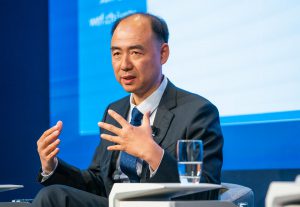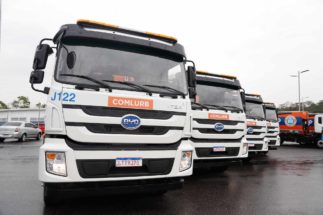Ten years after the call for commitments and action on Sustainable Energy for All (SEforALL) initiative, universal access to energy and to modern, energy-efficient technologies is still a distant dream for many, particularly in the Hindu Kush Himalayan (HKH) region. While this UN global initiative aimed to address the challenges of securing energy access for all women and men, women continue to face lack of choice in accessing clean, affordable, and safe energy options.
International Women’s Day provides us an occasion to take stock of these commitments and reflect on areas where progress needs to be made. In the HKH region, where energy poverty is widespread, there are multiple challenges related to gender and access to clean and sustainable energy. The Hindu Kush Himalayan Monitoring and Assessment Programme (HIMAP) indicated that of the 240 million people living in the HKH, more than 80% lack primary access to electricity and to modern sources of energy for cooking.
Despite efforts made by national governments in the region to secure access to basic energy, most of these efforts are gender-neutral and do not acknowledge the gender differentials in needs, priorities and access.
![Woman burning cooking food using burning wood. For many women in the HKH region the only form of energy is burning wood or biomass [image courtesy: ICIMOD]](https://dialogue.earth/content/uploads/2020/03/Jiten_180927_MG_0628.jpg)
It goes without saying that women bear the greater burden of this energy poverty.
Resource rich region, energy poor people
Access to energy is fundamental to human development and is an enabler of economic growth. Access to affordable, reliable, and sustainable energy is also crucial for achieving other Sustainable Development Goals (SDGs). HIMAP noted that the region has a hydropower potential of over 500 GW, but the people in general remain energy poor and vulnerable. Then, there are other challenges related to environmental degradation and poverty that prevent people from meeting their daily energy needs. These challenges have an equity dimension – in terms of allocation, distribution, and utilization of resources, where the men control decisions related to use of energy services and technologies.
![Woman carrying large stack of wood on her back for use as heat energy. Women bear a disproportionate burden [image courtesy: ICIMOD]](https://dialogue.earth/content/uploads/2020/03/Santosh-Pathak-6447.jpg.jpg)
For most people, the priority is clean energy to meet household needs for cooking and heating. Although there are successful examples of electricity access and energy efficiency programmes, the sector is largely silent about gender issues. The literature on gender and energy clearly shows how energy poverty at the household level affects women’s time, health, education, and participation in other activities. HIMAP notes where most households depend on biomass for cooking, environmental degradation has added to the burden of women who are now forced to travel greater distances to fetch fuelwood. Inequitable gender and social power relations also result in unequal access to and control over energy resources between women and men and among different caste and ethnic groups.
The failure of gender-neutral policies
Despite efforts made by national governments in the region to secure access to basic energy, most of these efforts are gender-neutral and do not acknowledge the gender differentials in needs, priorities and access. There is often no mention of women’s needs and aspirations in clean energy policies. Also, the policies rarely address interlinkages between gender and social differentials on the one hand and energy on the other. The consequences are clear. For instance, introduction of commercial cooking fuels has not stopped poor women from using biomass for cooking because it has not addressed the issue of economic empowerment of women so that they might make energy choices at the household level. Men in the household may not support these economic decisions and expect women to still invest time and effort in procuring biomass to meet household energy needs.
![solar panels on the roof of shops. Solar and wind power innovations may allow for a "democratising" of energy resources desperately needed in the HKH region [image courtesy: ICIMOD]](https://dialogue.earth/content/uploads/2020/03/WIND-POWER-RABIN-CHAKRABARTI-2.jpg)
Similarly problems plague the hydropower sector. In their feminist political ecology critique of hydropower development in India, published in the International Journal of the Commons in 2019, Gitta Shrestha, Deepa Joshi and Floriane Clement note that the sector and its organisational structures demonstrate a culture that is incompatible with a focus on vulnerabilities, inequalities, and disparities. It is therefore critical to look into questions about gender and social justice while addressing the energy needs of the people in the HKH. There is also a need to understand the symbiotic relationship and bidirectional role of women with natural resource systems as the women procure and process fuel to meet household energy demands.
Energy access and affordability
The major unanswered questions relate to accessibility and affordability, particularly given the gender-based inequalities in terms of women’s access to and control over technologies, design choices, and resources. Therefore, without tackling these structural issues, women will continue to remain marginalised in the energy sector and will not find a role in the management and control of these resources despite state and civil society efforts in promoting gender-friendly technologies.
For equal access to sustainable and clean energy in the HKH region there is a need for gender and social transformative change that not only looks at the economics – public and private sector investment, institutional coherence, regional energy trade, and cooperation – but also at environmental safeguards, and gender and social impacts.
A shift in the energy sector
To address this, a step beyond one-size-fits-all solutions is required that promotes gender equality in the energy workforce that is typically male-dominated. A significant move is to bring about a cultural shift in the energy sector: to break the glass ceiling for women, change the mindset of the people, both in the government and the community. Unless the energy synergies and trade-offs are understood from a gender lens in relation to other SDGs, it will constrain, counteract, or reverse gains made against the goals on hunger, education, gender, work and economy, inequality, and other SDGs.
While some efforts in the HKH – such as micro-hydro, biogas, improved cookstoves, and solar programmes – are an example to the rest of the world, challenges related to gender and social justice persist. Clean energy programmes are likely to receive a major emphasis in national plans, especially given country commitments to SDGs and the Paris Agreement.
This presents a great opportunity to orient programmes so that they are not merely about rural electrification or improved clean energy access, but also about empowering women, supporting women energy entrepreneurs, and changing the essentially masculine nature of the power sector. A gender responsive approach to energy access programmes will benefit women, local communities, and the environment, and help HKH countries achieve the SDGs.
![<p>The energy poor environment reduces the lives of many, disproportionately women, to darkness [image courtesy: ICIMOD]</p>](https://dialogue.earth/content/uploads/2020/03/3Piyush.jpg)





![Forest fire near Ramgarh, Uttarakhand [Image by: Joydeep Gupta]](https://dialogue.earth/content/uploads/2020/03/Forest_Fire_Ramgarh_JG-300x200.jpg)
![Farmers carry a sack of harvested clover to feed their animals, near Khuspur village, Punjab Province, Pakistan [image: Alamy]](https://dialogue.earth/content/uploads/2020/03/E62ENH-300x200.jpg)
